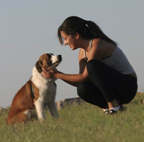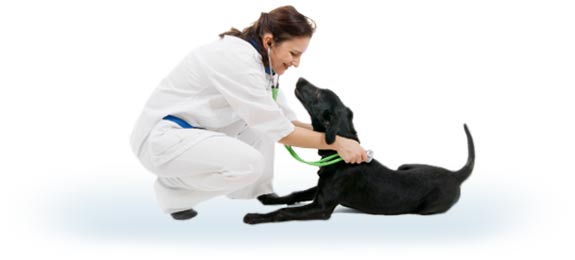Many dogs develop arthritis as they age. Canine arthritis is also known as osteoarthritis or degenerative joint disease (DJD). Whether drugs, surgery, or other alternatives are indicated in arthritis treatment, make sure your dog gets plenty of rest and limit exercise when your dog has a flare-up, during treatment, and recuperation.
The most common reason dogs get arthritis is wearing and tear on the joints from aging. But arthritis can be caused by athletic or traumatic injury, being overweight, genetics, elbow or hip dysplasia, or failure of proper bone development in puppies.
A diagnosis of arthritis is based on the history of your dog (if he had an injury, or is overweight), clinical signs, palpation of the joints, X-ray, and analyzing joint fluid.
Dog Arthritis Stages
Contents
Mild
Occasionally lame after hard exercise
Moderate
Some stiffness when getting up
Limps after regular exercise
Walks slowly or has a slightly altered gait
Hops instead of runs
Hesitates to jump or climb stairs
Severe
Needs help getting up
Limps at all times
Unwilling to climb stairs or jump
Difficulty squatting to urinate or defecate
Shows loss of muscle in the affected limb
Indicates pain when touched
Arthritis Signs
A dog who has arthritis can exhibit the following symptoms:
- grating, crackling, or popping sounds upon movement of the joint
- swelling around a joint
- heat around a joint
- tenderness when you palpate a joint
- tenderness when flexing a joint
- holds his breath or stops panting when a painful joint is manipulated
- reacts suddenly — turns his head, snaps, or yelps in pain when you touch a sore joint
- puts less weight on a leg with a sore joint when he’s standing still
- holds up a leg with a sore joint
- redness of the skin around a sore joint — part your dog’s fur to see
- lags behind on walks
- decreased appetite — pain from arthritis can cause a dog to stop eating
- difficulty rising from a resting position
- a personality change resisting touch
- onset of stiffness worse in the mornings, but improves as the day progresses
Dog Arthritis Fast Facts
A healthy joint consists of cartilage that covers and protects the ends of the bones in a joint. The cartilage has no nerves — when it touches the cartilage of another bone, your dog feels no pain. But arthritis causes the cartilage to wear away. This exposes the bone, which has many nerves.
When bones grate and touch each other, there is pain and inflammation in the joint. This can result in changes to the joint cartilage, the joint fluid, the bones involved in the joint, and the actual capsule of the joint.
This pain can greatly affect your dog’s quality of life.
Arthritis Types
Because arthritis is diagnosed by type, a trip to the veterinarian is necessary for diagnosis and treatment. These types include:
- osteoarthritis (OA) also known as Degenerative Joint Disease (DJD)
- hip, elbow, or knee dysplasia
- stifled joint
- osteochondrosis
- hypertrophic arthritis
- shoulder degeneration
- wrist arthritis (carpi)
- kneecap (dislocation)
- infectious arthritis (Inflammatory Joint Disease)
- rheumatoid arthritis also known as Immune-Mediated Disease (RA)
- idiopathic (where the cause is unknown)
Arthritis Treatments
Degenerative joint disease can sometimes be halted or prevented by surgery when X-rays indicate joint malformations. If surgery is not advisable, relief can be achieved with a painkillers, anti-inflammatory medicine, exercise, rest, diet, supplements, or non-steroidal anti-inflammatory drugs (NSAIDs). Your veterinarian will recommend the best treatment.
Prescription Drugs
1. Rimadyl (carprofen) can relieve pain with few side effects. Long-term use of this drug requires periodic blood tests for liver function, but most dogs do well on it. Like all drugs, Rimadyl is not effective for all patients.
2. Adequan (polysulfated glycosaminoglycan) is given by injection twice each week for 4 weeks. It not only relieves the pain of arthritis, it binds to damaged cartilage to facilitate repair, blocks the action of destructive enzymes that cause inflammation, and stimulates the production of healthy joint fluid.
3. Palaprin6 is a buffered aspirin specifically for dogs; it can be used in the same circumstances in which aspirin is used, but without the gastrointestinal irritation that sometimes occurs with aspirin.
4. Anti-inflammatory medications control pain and inflammation.
5. Corticosteroids (steroids) are commonly used for treating arthritic dogs.
Other Treatments
Holistic therapy includes magnetic pet pad beds, acupuncture, and herbal medicines.
Physical therapy includes a range of motion, stretching, whirlpool, swimming pool, moderate low-impact leash walking, and massage. When walking your dog, use a pet harness to prevent stress and strain to distribute the pressure from the lead or leash better than a standard collar. A harness takes the direct stress off their neck.
Additional Help for Your Dog
- Provide a special dog bed such as egg crate mattresses, heated beds, or an orthopedic bed.
- Use a stroller for the ultimate comfort when going on walkies.
- Dog ramps or pet stairs help older and arthritic dogs get up or down from a sofa, chair, or bed.
- Comfort lift carriers placed under your dog’s chest or abdomen help arthritic, lame, or recovering pets up and down the stairs, in and out of vehicles, or up on their feet. Make a homemade sling — slip a long, wide strap made of leather, canvas, or a towel under your dog’s chest and hold an end in each hand.
- Provide a pet carrier that is soft, comfortable, and lightweight for pets that like to curl up.
- Provide shelter from wind, heat, cold, rain, and snow.
- Apply heat to relieve muscle spasms and pain. Soak a towel in warm water, and apply to the joint for 10 minutes, 2 – 3 times a day. Be careful with heat — if the heat pack is too warm, it can irritate the skin.
- If you notice swelling in the joint area apply a cold pack, or ice wrapped in a towel, for 15 – 20 minutes, a few times a day. Also be careful with cold packs because if they are too cold, or are used for too long, they can irritate the skin. Talk to your veterinarian if you see signs of joint swelling.
- A circulating warm-water heating pad under a blanket can provide added warmth. To avoid burning the skin, don’t place your dog directly on the heating pad.
- Dogs with arthritis can experience more discomfort when in a cold, damp environment — try to keep your dog warm and dry.




